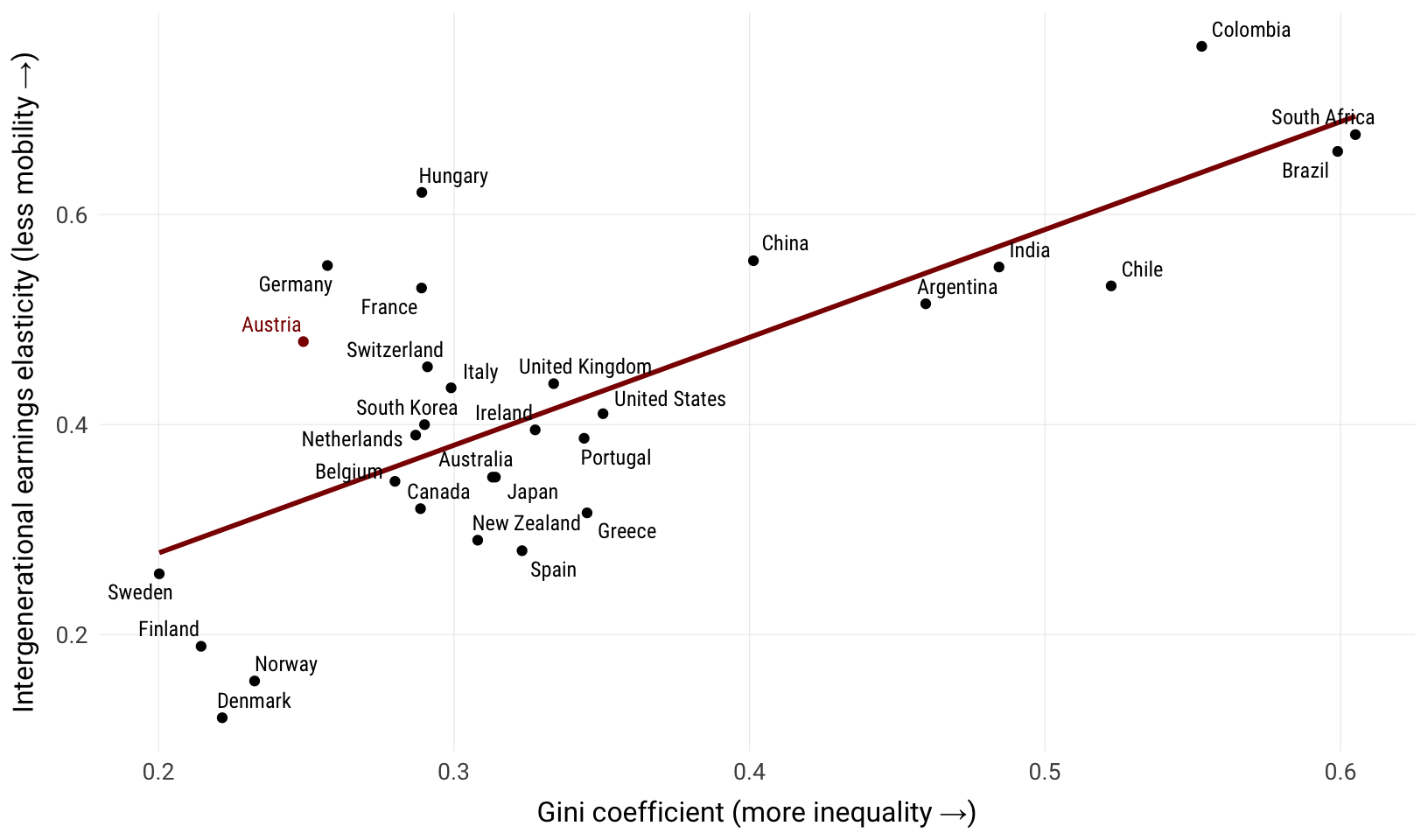
Economic Policy Visualization
Mobility · Maps
June 5, 2023
Discuss with your neighbour
How would you describe the state of intergenerational social mobility in your country?
Which channels do you know where parents exert influence on the socio-economic outcomes of children?


Illustrations by https://openpeeps.com.
Selected channels of intergenerational persistence
- Children of well-off families attend better educational institutions, which results in higher incomes later on.
- Family background shapes individual labor market-related characteristics (Habitus, social and cultural capital, health, etc.)
- Children of poorer families face higher opportunity costs at their job search and tend to accept the first job opportunity
- Social networks of the well-off facilitate job search substantially
Glass ceiling
That room [at the top] rarely opens up because those mediocrities are too well-screened by parents who hire private tutors, buy cultural enrichment, teach etiquette, set expectations, stand as personal examples of success, coach interview technique, navigate any bureaucratic maze put before them, set up home in nice areas, arrange internships via friends and, just to rub in their supremacy, make direct gifts of cash and assets. To fail under these conditions is a kind of achievement in itself.
Janan Ganesh
Financial Times (December 9, 2016)
Traditional theory
Becker/Tomes (1979), Becker/Tomes (1986):
- Optimization problem for parental investments into the human capital of descendants (utility of parents is maximized)
- Stochastic term for “birth lottery” (genetic abilities, talents): Nature versus Nurture
- Parental utility does not only depend on the life-cycle income of the descendant, but there is dynastic utility
Response by Daly (1982): Provision of descendants in future generations is a public good, since the future offspring may potentially descend from all other members in a society.
Objection by Mani et al. (2013): Rational parental behaviour is limited by income and wealth, since poverty impedes cognitive abilities of adults and hinders rational investment decisions in childern.
Measurement of intergenerational mobility
Intergenerational earnings elasticity: \(\beta\) \[log~y_{ic} = \alpha + \beta~y_{ip} + \varepsilon_{ic}\] Intergenerational earnings correlation: \(\rho\) \[\rho = \beta~\frac{\sigma_p}{\sigma_c}\] with \(\sigma\) being the standard deviation.
Life cycle vs. current income
(Measurable) current income corresponds to life cycle income plus random transitory deviations \[ y_{ic}^* = y_{ic} + \omega_{ic} \\ y_{ip}^* = y_{ip} + \omega_{ip} \]
Intergenerational elasticity is calculated with current income records
\[ plim~\widehat{\beta} = \frac{cov(y_{ip}^*, y_{ic}^*)}{var(y_{ip}^*)} = \\ = \frac{\beta\left[var(y_{ip}) + cov(y_{ip}, \omega_{ip})\right] + cov(y_{ic}, \omega_{ic})/\beta + cov(\omega_{ic}, \omega_{ip})}{var(y_{ip}) + 2 \cdot cov(y_{ip}, \omega_{ip}) + var(\omega_{ip})} \]
Consequently there is an attenuation bias (downward bias) \[ plim~\widehat{\beta} = \beta \frac{var(y_{ip})}{var(y_{ip}) + var(\omega_{ip})} < \beta \]
Transition matrices
A transition matrix captures the probabilities of switches \(p_{ij}\) from status \(i\) to \(j\).
\[ P = \left[ {\begin{array}{cccc} p_{11} & p_{12} & \cdots & p_{1n}\\ p_{21} & p_{22} & \cdots & p_{2n}\\ \vdots & \vdots & \ddots & \vdots\\ p_{m1} & p_{m2} & \cdots & p_{mn}\\ \end{array} } \right] \]
There are various indices to compare transition matrices:
- Prais-Index: \(M(P) = \frac{n - trace(P)}{n-1}\) where \(M(P) \in [0,1]\)
- Absolute Average Jump (AAJ): \(\Omega = \frac{\sum_{i=1}^{n}|rank_{ic} - rank_{ip}|}{n}\)
Great Gatsby curve
Educational mobility in Austria
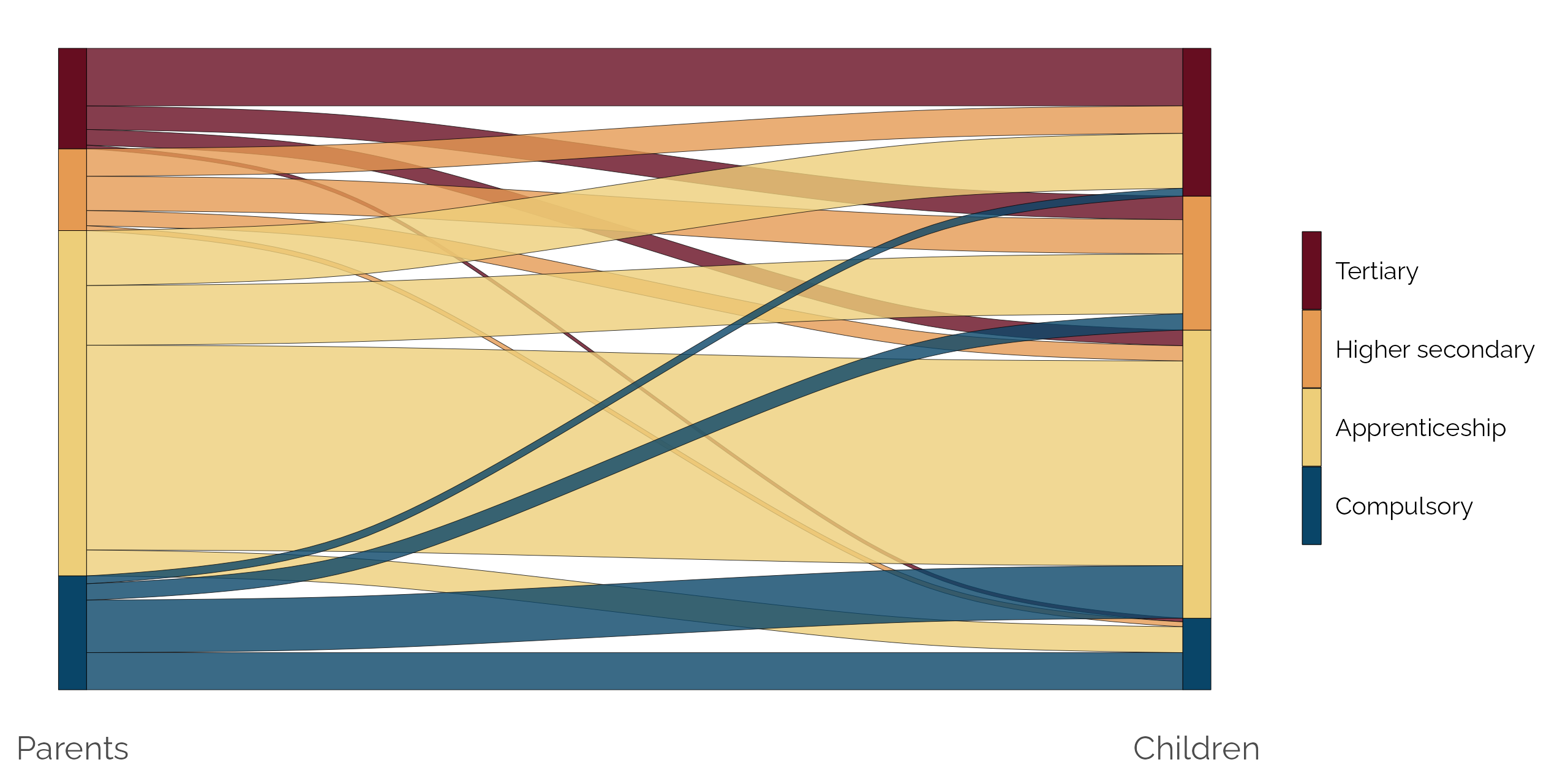
Decreasing absolute mobility in the US

Multigenerational persistence
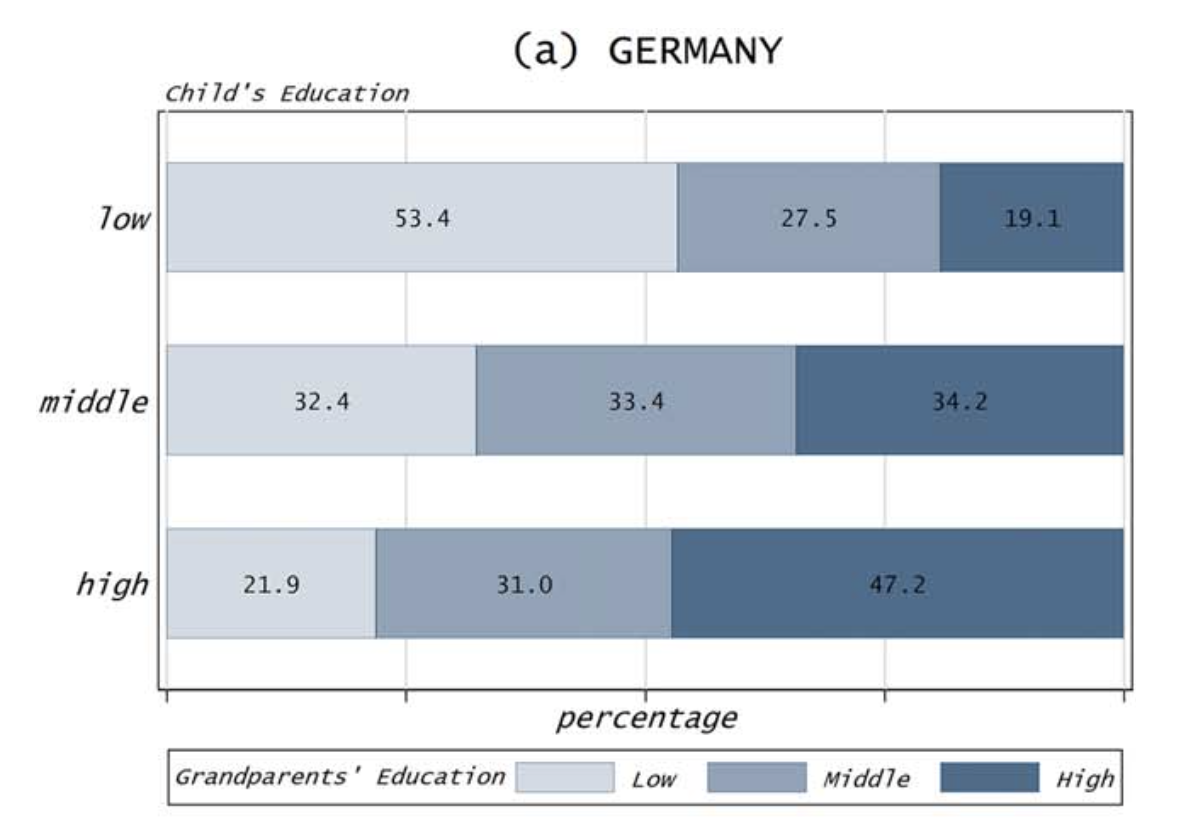
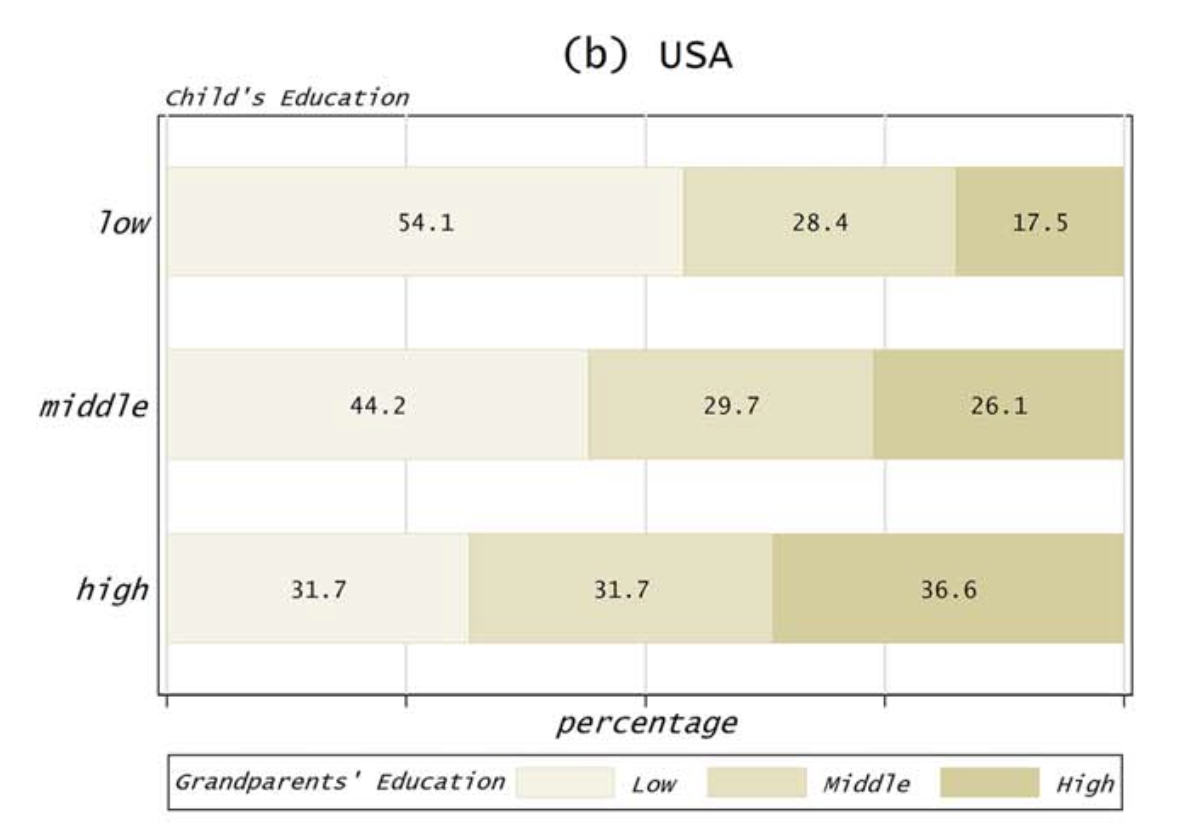
Mobility takes generations
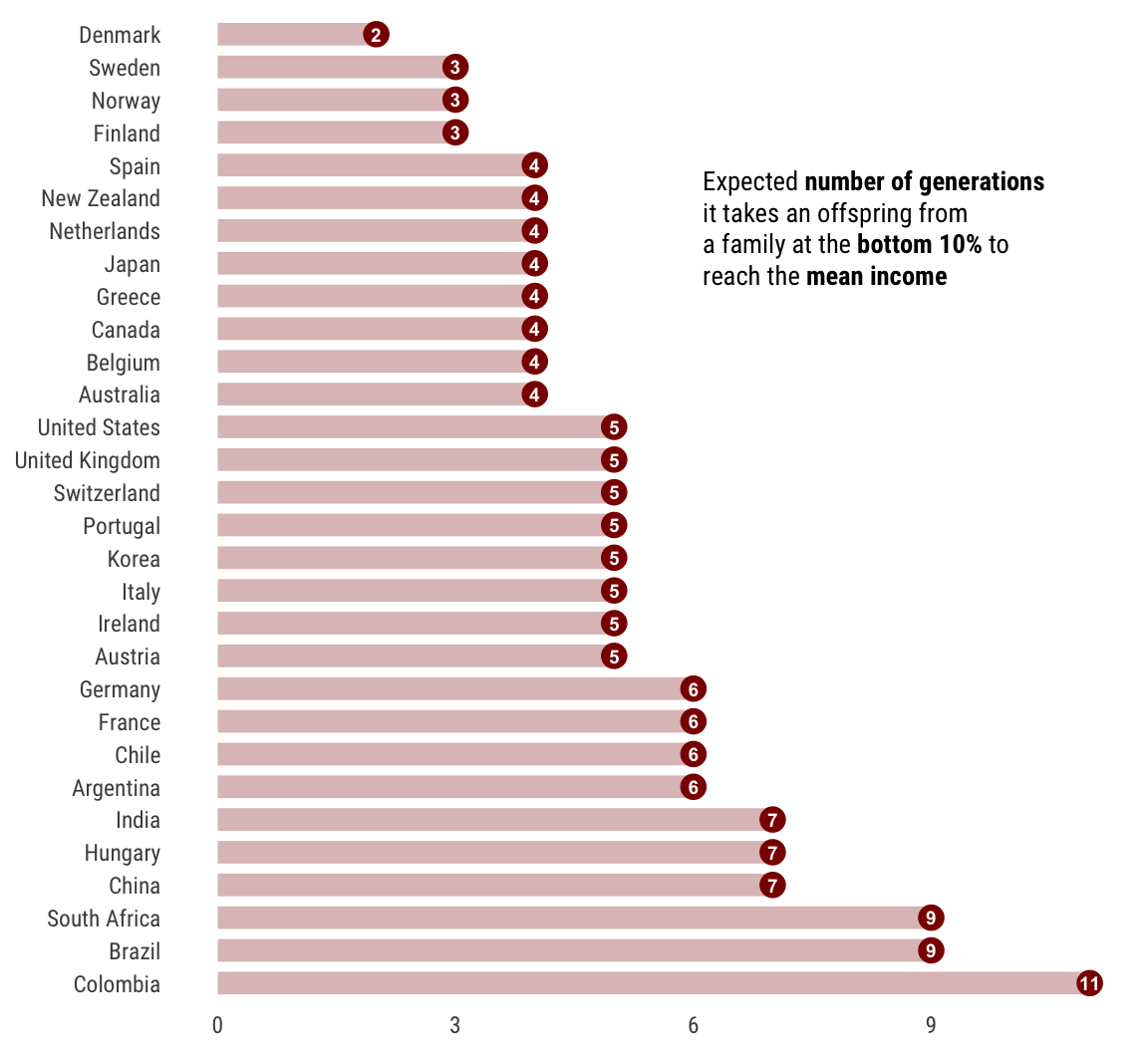
Long-term social persistence
- 🇬🇧 Clark/Cummins (2015): Richest british families around 1850 still own four times the average family wealth in 2012
(= 5 generations later) - 🇮🇹 Barone/Mocetti (2020): Families with highest income in Florence in 1427 still are at the top of the income distribution in 2011
(= 6 centuries later) - 🇩🇪 Braun/Stuhler (2017): Social status in Germany also depends from the great-grandparents.
(= 4 generations later)
Maps

Projections
Choose a map projection! For instance, {giscoR} by Eurostat provides maps in the following three projections. Check coordinates for axis limits at https://epsg.io.
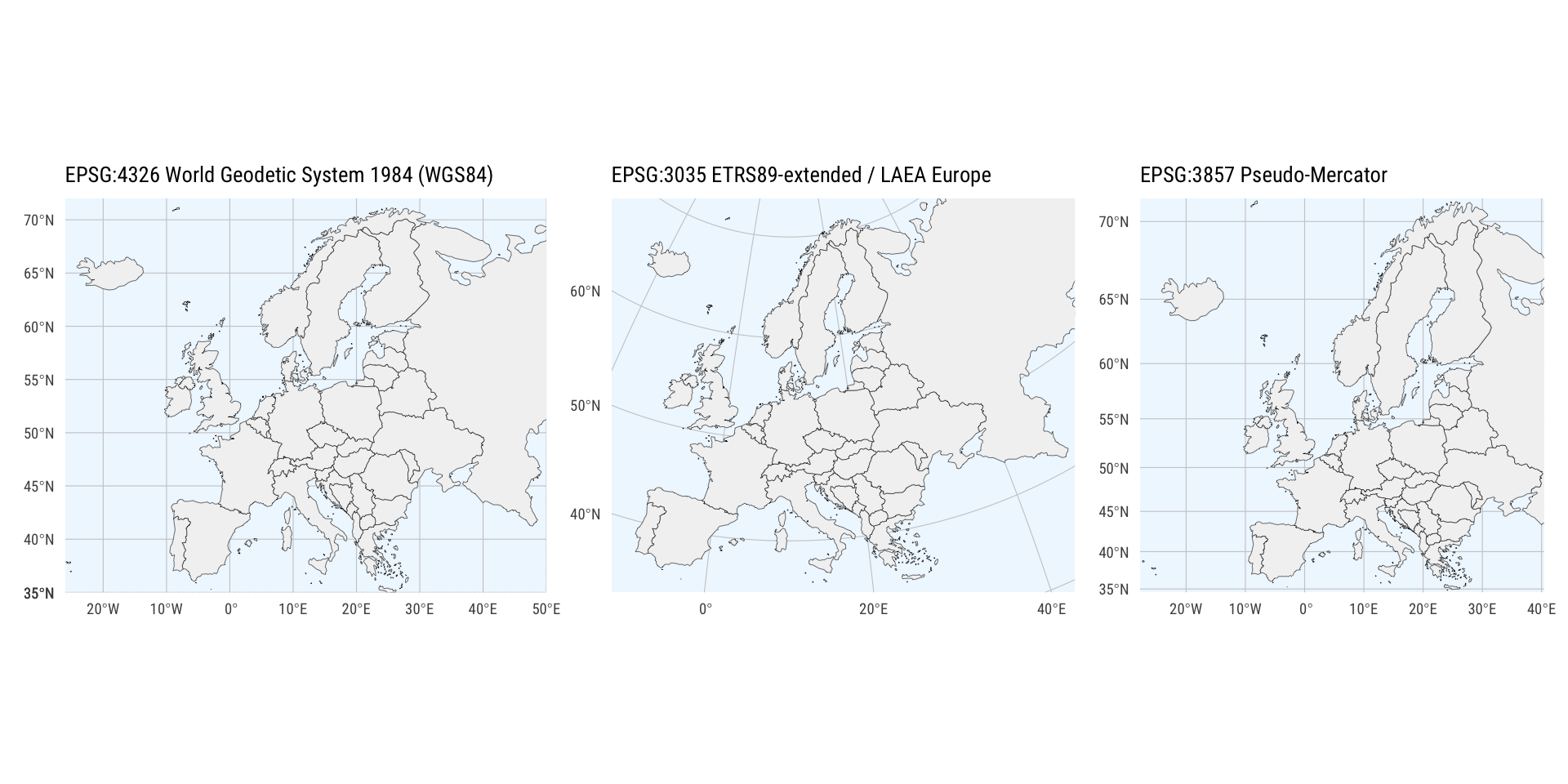
The {sf} package
The sf (simple features) package deals with spatial geometries. These features have a geometry describing where on Earth the feature is located, and they have attributes, which describe other properties.
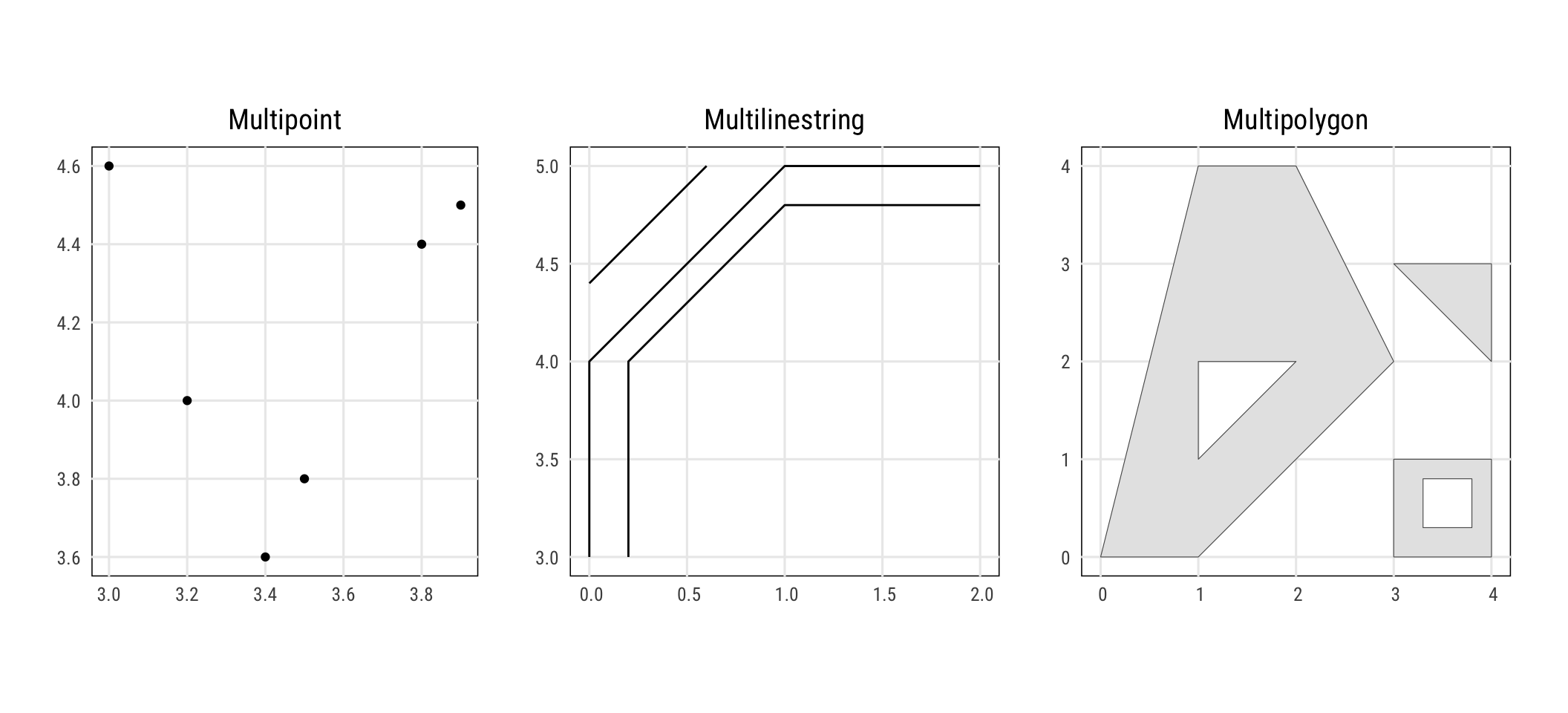
Plot a map
Simple feature collection with 3 features and 2 fields
Geometry type: POLYGON
Dimension: XY
Bounding box: xmin: 3618229 ymin: 1900590 xmax: 5257241 ymax: 2889034
Projected CRS: ETRS89-extended / LAEA Europe
CNTR_ID NAME_ENGL geometry
1 AL Albania POLYGON ((5148385 2216599, ...
2 AT Austria POLYGON ((4832035 2857837, ...
3 AD Andorra POLYGON ((3640254 2192873, ...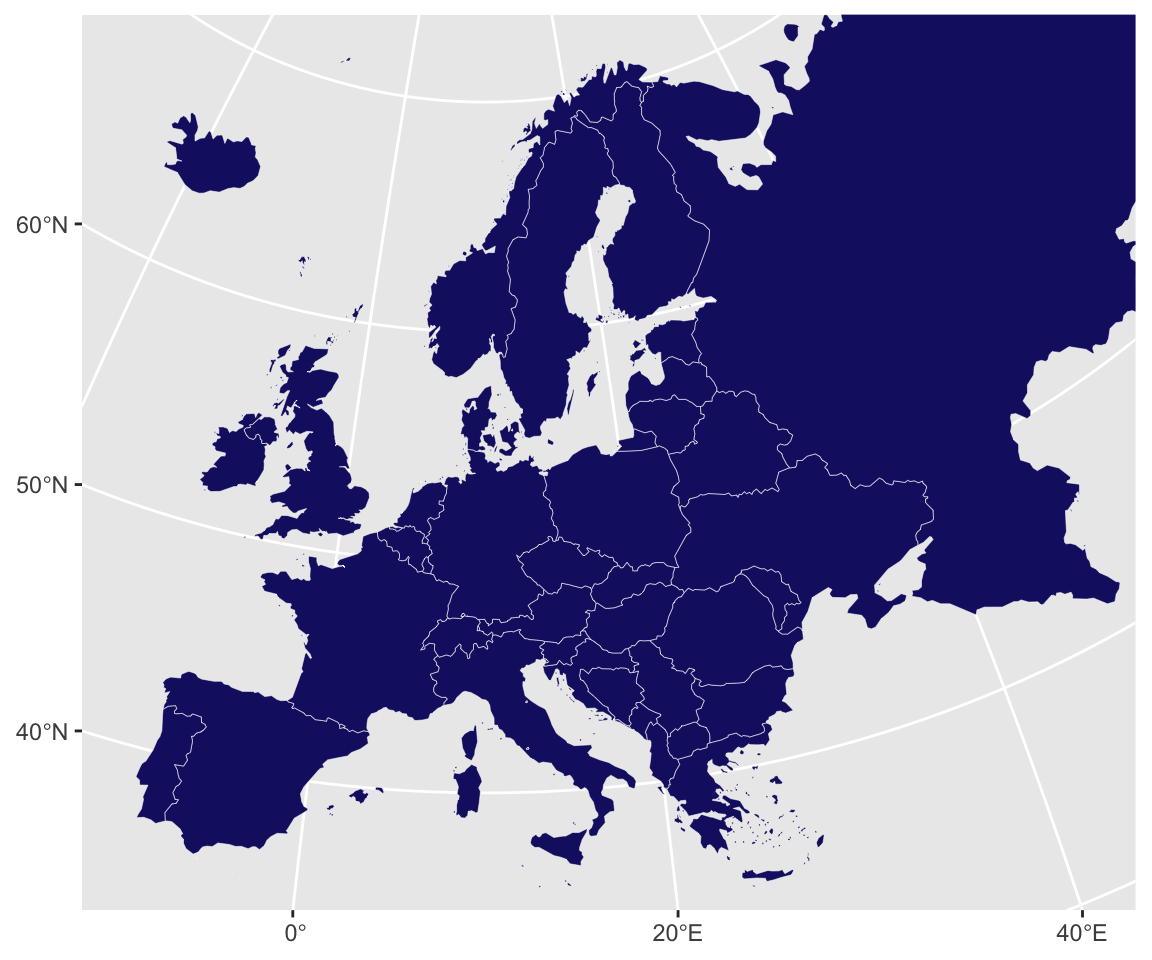
Bibliography

PI 5620 Advanced Economic Policy | Summer term 2023